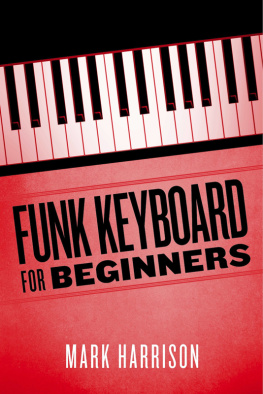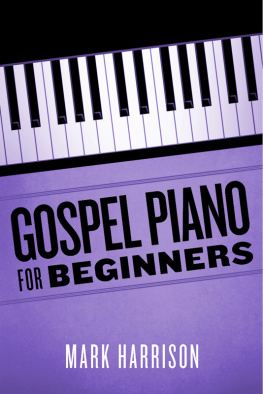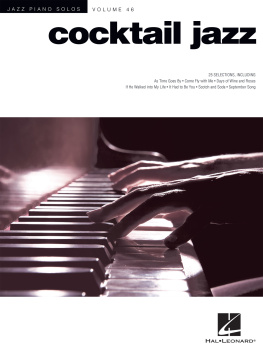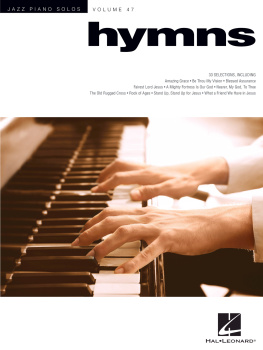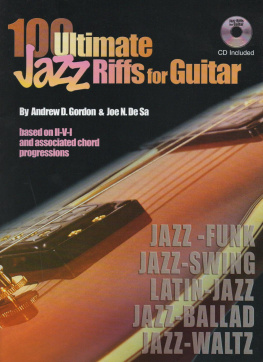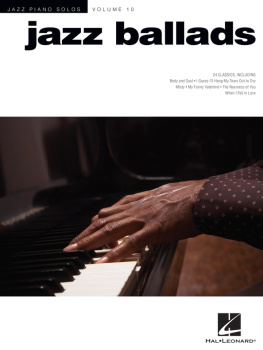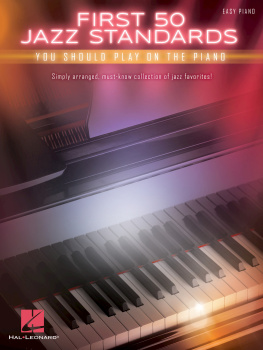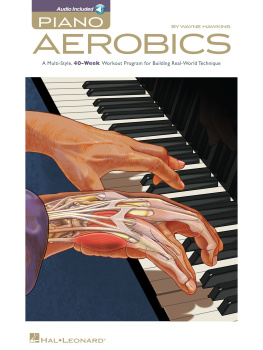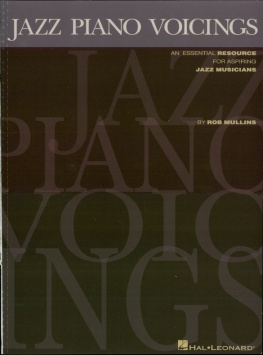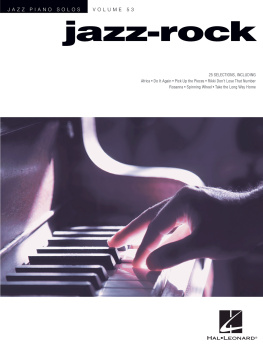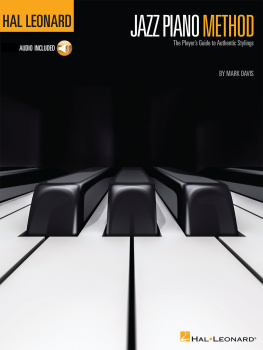ISBN 978-1-4803-9591-6
7777 W. Bluemound Rd. P.O. Box 13819 Milwaukee, WI 53213
In Australia Contact:
Hal Leonard Australia Pty. Ltd.
4 Lentara Court
Cheltenham, Victoria, 3192 Australia
Email: ausadmin@halleonard.com.au
No part of this publication may be reproduced in any form or by any means
without the prior written permission of the Publisher.
Visit Hal Leonard Online at
www.halleonard.com
Welcome to Jazz-Rock Piano Chops . If you really want to jump-start your piano technique so you can play convincingly in todays jazz-rock and fusion styles, then youve come to the right place! This book gives the beginning-to-intermediate player a complete jazz-rock piano workout: youll develop your rhythmic feel, dexterity, hand coordination, and voicing skills as you work through the very fun and authentic exercises. Each example is recorded at several tempos, so you can choose the one thats right for you as you play along with the jazz-rock rhythm section with the audio.
First youll get started with the Chops-Building Exercises, which will fire up your technique and voicing chops as you comp (accompany) on some classic jazz-rock changes. Then your workout will really get into high gear in our Groove Lab, where youll work with straight and swing rhythmic subdivisions while learning four different ways (from simple through to more complex) to play over each of the chord progression examples.
Then in Phrases and Licks Used by the Pros, well check out some key phrases and techniques used by top jazz-rock piano players, so that you can incorporate these ideas into your own music. Finally, in the Etudes section, we have longer pieces in the style of legendary keyboardists such as Joe Zawinul, Russ Ferrante, Jeff Lorber, Donald Fagen, and Bruce Hornsby. These pieces will help you use your jazz-rock piano techniques in a musically and stylistically effective way.
Good luck with developing and using your Jazz-Rock Piano Chops!
About the Audio
On the accompanying audio, youll find play-along tracks for almost all of the examples in the book, recorded at several tempos. For each track, the rhythm section is on the left channel and the piano is on the right channel. When you want to play along with the band, turn down the right channel to eliminate the recorded piano. When you want to hear the piano part for reference, turn down the left channel to eliminate the rhythm section. This is designed to give you maximum flexibility when practicing. The rhythm section tracks contain bass and drums, plus a selection of other instruments (guitar, synth, and organ).
The Straight-eighths Rhythmic Feel
Most jazz-rock styles are written in / time and use patterns based around eighth or th notes. Each of these subdivisions can be played straight or swing , essentially resulting in four main rhythmic feels:
- Straight eighths
- Swing eighths
- Straight ths
- Swing ths
In this chapter, we will work on chops-building exercises using straight-eighths and straight-ths feels. Then, in Chapter (Groove Lab), we will incorporate the swing-eighths and swing-ths feels.
In a straight eighths feel, each eighth note is of equal length and divides the beat exactly in half, as follows:
Track 1 There is audio content at this location that is not currently supported for your device. The caption for this content is displayed below.
Note the rhythmic counting below the notes. This is how eighth-note rhythms are normally counted, with the , , , and falling on the downbeats , and the &s falling halfway in between, on the upbeats . Check out exercises 1, 2 & 3 to get comfortable with this rhythm and counting concept. A lot of jazz-rock tunes use this rhythmic subdivision, particularly at medium-to-fast tempos.
Straight-eighths Chops-Building Exercises
Now well get to the first set of chops-building exercises, using the straight-eighths rhythmic feel above. The goal of these exercises is to develop technical dexterity and hand coordination, while also learning chord voicings and rhythm patterns that are appropriate and stylistic for jazz-rock.
The audio for the exercises in this section are recorded at three different tempos: , , and beats per minute (bpm). The exercises are repeated twice at each tempo.
Depending on your playing level, you can start at the slowest tempo as needed, before moving on to the faster tempos. Make sure you are comfortable with the voicings and the rhythms shown, when playing at each tempo. You can also practice hands separately as needed, before combining the hands together on each exercise.
Straight-eighths Exercise #1
70 bpm There is audio content at this location that is not currently supported for your device. The caption for this content is displayed below. | 100 bpm There is audio content at this location that is not currently supported for your device. The caption for this content is displayed below. | 130 bpm There is audio content at this location that is not currently supported for your device. The caption for this content is displayed below. |

In the right hand, we are using a staple jazz-rock piano device I call minor pentatonic fourth intervals in my books and classes. These are fourth intervals derived from a minor pentatonic scale, in this case E minor pentatonic, containing the notes E, G, A, B and D. The above intervals (B-E, A-D, and D-G) can be floated over various chords available in the minor key. Here, the Em, G/, and Asus chords function as I, E III, and IV respectively in the key of E minor. In the second half of measure , the right hand is arpeggiating (playing broken-chord style) through the D major chord, starting with a four-to-three resolution, G moving to F B . Meanwhile, the left hand is playing the root of each chord on beats and of each measure.
Rhythmically, the right-hand part uses an interesting mix of upbeats and downbeats. In measure , the right-hand fourth intervals land on beats and (downbeats), and then on the & of and & of (upbeats). The left hand is adding an eighth-note pickup into beat , adding to the forward motion of this groove.
Straight-eighths Exercise #2
70 bpm There is audio content at this location that is not currently supported for your device. The caption for this content is displayed below. | 100 bpm There is audio content at this location that is not currently supported for your device. The caption for this content is displayed below. | 130 bpm There is audio content at this location that is not currently supported for your device. The caption for this content is displayed below. |





